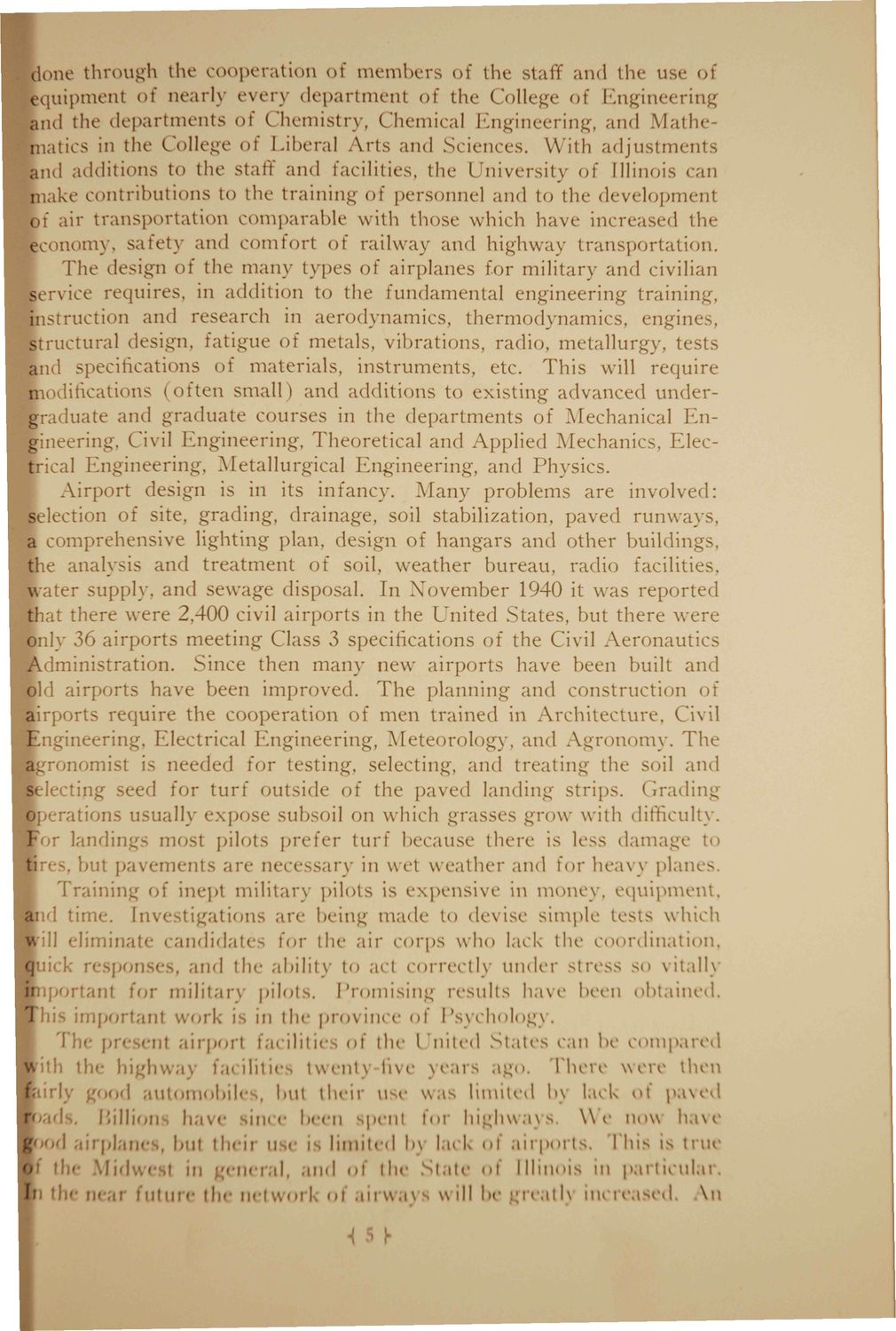| |
| |
Caption: Dedication - Justification and Planning for Willard Airport (1942)
This is a reduced-resolution page image for fast online browsing.

EXTRACTED TEXT FROM PAGE:
done through the cooperation of members of the staff and the use of equipment o\ nearly every department of the College of Engineering ind the departments of Chemistry, Chemical Engineering, and Mathematics in the College of Liberal Arts and Sciences. With adjustments uul additions to the staff and facilities, the University of Illinois can make contributions to the training of personnel and to the development of air transportation comparable with those which have increased th( economy, safety and comfort of railway and highway transportation. The design of the many types of airplanes for military and civilian service requires, in addition to the fundamental engineering training, instruction and research in aerodynamics, thermodynamics, engines, structural design, fatigue of metals, vibrations, radio, metallurgy, tests uul specifications of materials, instruments, etc. This will require modifications (often small) and additions to existing advanced undergraduate and graduate courses in the departments of Mechanical Engineering, Civil Engineering, Theoretical and Applied .Mechanics, Electrical Engineering, Metallurgical Engineering, and Physics. Airport design is in its infancy. Many problems are involved: selection of site, grading, drainage, soil stabilization, paved runways, a comprehensive lighting plan, design of hangars and other buildings. the analysis and treatment of soil, weather bureau, radio facilities, water supply, and sewage disposal. In November 1940 it was reported that there were 2,400 civil airports in the United States, but there were only v36 airports meeting Class 3 specifications of the Civil Aeronautics Administration. Since then many new airports have been built and old airports have been improved. T h e planning and construction of airports require the cooperation of men trained in Architecture, Civil Engineering, Electrical Engineering, Meteorology, and Agronomy. The agronomist is needed for testing, selecting, and treating the soil and selecting seed for turf outside of the paved landing strips. Grading operations usually expose subsoil on which grasses grow with difficulty. For landing most pilots prefer turf because there is less damage t tin . but pavements are necessary in wet weather and for heavy planes. Training of inept military pilots is expensive in money, equipment, I time. [nv< tigationS are being made to devise simple tests which will eliminate andidates for the air corps who lack the coordination, quick r pons* . and the ability to acl correctly under stress so vitall) ir.jportant for military pilots. Promising results have been obtained. Tin mportanl work is in the province of Psychology, Tl p enl airport fa< ilities of the I United States can be < »mpare hiidivvav fauliti' . t\\ent\ live veais .t^,, There were then Irifli t) irl lood If good automobil< but then use was limited l»\ lack of pave Billions have since been penl tor highways We now have rplaii' , bnt t h r u n - is limited I>\ \;w\% ol airports. t in ; nrral, md ol' the > This is trn ite <»l Illinois in parlicnlar. the Midvv 1J i|i» near future the network ol airways will be ;;t < atlj increased ^ 5)- Vn
| |